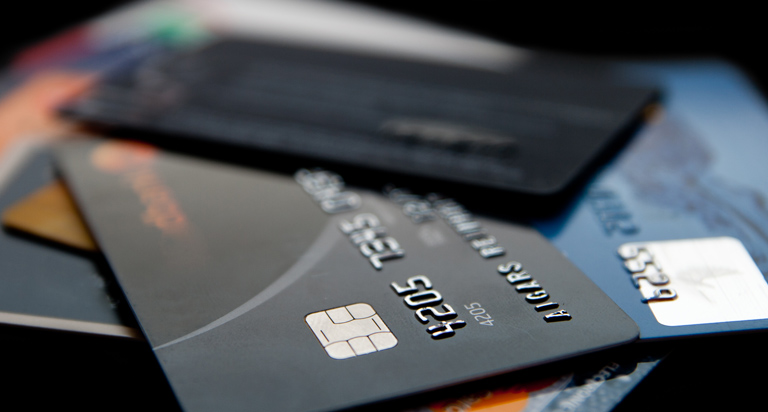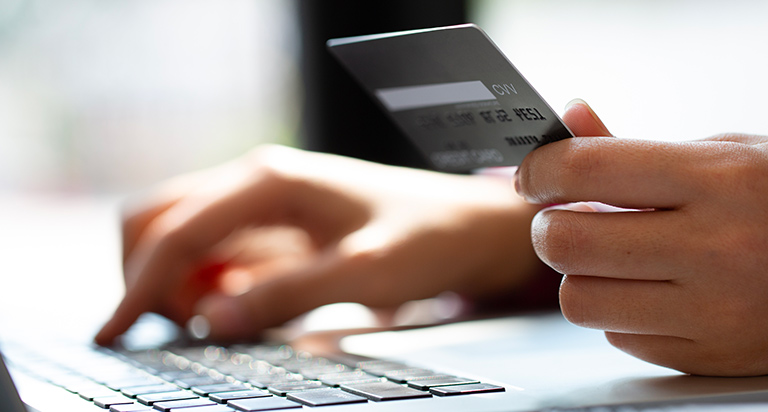How to Help Prevent Credit Card Fraud


Highlights:
- Credit card fraud is a complex form of identity theft that occurs when someone gains access to your credit card information and uses it to charge purchases to the account or remove funds from it.
- Thieves use various methods to commit credit card fraud including application fraud, skimming and physical theft.
- Be sure to monitor your credit card accounts, develop safe online habits and regularly check your credit reports to help better prevent credit card fraud.
Credit card fraud is a complex form of identity theft that occurs when someone gains access to your credit card information and uses it to make unauthorized purchases. A thief may target a victim’s physical credit card or use digital means to access their account information.
Credit card fraud can cost you time and money, drive up your debt and send your credit scores plummeting. Worse still, it may take months to resolve.
Here are some of the most common forms of credit card fraud — plus, steps you can take to help prevent credit card fraud in the first place.
Types of credit card fraud
Thieves use various methods to commit credit card fraud:
- Credit card application fraud. This kind of fraud happens when someone uses your personally identifiable information (PII) to open a new credit card in your name. The thief may access your personal information by installing malware on one of your devices or via a large-scale data breach.
Application fraud can be especially damaging, as it can significantly impact the victim’s credit scores. Opening a new credit account results in what’s known as a hard inquiry on your credit reports. Too many hard inquiries in a short period — whether initiated by you or a thief — may harm your credit scores.
- Phishing and smishing scams. Phishing involves sending fraudulent emails to trick victims into clicking a link that will expose their data or download malware onto their devices. Smishing refers to the same strategy for text messages. These scam messages can be hard to spot and appear as though they’ve been sent by a trusted source such as your bank or a commonly used online retailer.
- Credit card skimming and cloning. Credit card skimmers are small devices secretly fixed onto the card readers of legitimate ATMs, gas pumps and restaurants. When you insert your credit card into one of these altered devices, the skimmer steals and transmits your name, account number and other information associated with your card. In a process known as cloning, that information can then be copied onto a blank card or overwritten onto another stolen card. The cloned card can be used to make purchases, obtain a cash advance or buy money orders.
- Credit account takeovers. This form of fraud occurs when someone contacts your credit card issuer using your stolen personal information to mimic your identity. Once a thief gains access to your account, they may lock you out by changing your login credentials, ultimately having a new physical card issued in your name but delivered to their home address.
- Lost or stolen credit cards. Credit card fraud may also occur the old-fashioned way — when someone steals your physical credit card. Whether your wallet is lost or stolen, the result is the same: the security of your credit card account is compromised.
Five strategies to help prevent credit card fraud
Credit card fraud is a common financial crime. Aided by advancements in digital technology, criminals have developed increasingly sophisticated methods to steal your financial information.
Fortunately, there are steps you can take to detect credit card fraud early on and help better protect yourself from its negative effects.
- Monitor your accounts.
What’s the best way to help detect credit card fraud? Carefully inspect your account statements each month. If you spot any unfamiliar activity, no matter the size of the transaction, dispute the charge with your credit card provider immediately. It’s common for fraud to begin with the thief making small test charges before escalating to bigger transactions.
- Sign up for fraud alerts when possible.
Many credit cards offer security features to help you identify fraudulent activity in real-time. If you can, opt to be notified each time a transaction occurs. Credit card providers may also proactively monitor your accounts for signs of fraud, such as foreign transactions, big-ticket purchases and other unusual spending patterns. You’ll be alerted to any suspicious transactions, typically before the charge goes through.
- Watch out for phishing and smishing scams.
Fraudsters send emails and text messages that appear to come from a legitimate source, such as a bank, the IRS or a trusted retailer, to trick consumers into willingly giving up important financial details. Be wary of overly generic texts and emails, grammatical and spelling errors, and irregular domains and email addresses. If you receive a text or an email notifying you of a problem with your account, don’t click the link included in the email, as it may include malware. Instead, log directly into your account from a web browser.
- Avoid using unsecured websites.
Stay safe online and never enter any important information while you’re using public Wi-Fi. Even if you do have a private connection, make sure you only visit websites with a URL that begins with “https” as this indicates that your connection is secure and any information you transmit will be encrypted. Visiting sites with a URL beginning with “http” (without the “s” at the end) may leave you vulnerable to digital attacks from malware and computer viruses that can steal your data.
- Regularly check your credit reports.
Review your credit reports regularly, checking for suspicious activity or new accounts that you don’t recognize. Monitoring your credit reports and credit scores is an important part of managing your debt and your overall financial health.
You can receive multiple Equifax® credit reports each year with a free myEquifax account. Sign up and look for “Equifax Credit Report” on your myEquifax dashboard. A free monthly VantageScore® 3.0 credit score and Equifax credit report are available when you sign up for Equifax Core Credit™. A VantageScore is one of many different types of credit scores.
You can dispute fraudulent accounts on your Equifax credit report if you notice information that you believe is the result of fraud. The three nationwide consumer reporting agencies — Equifax, Transunion® and Experian® - offer several ways to help better protect against identity theft and credit card fraud, including fraud alerts, security freezes and credit locks.
Get your free credit score today!
We get it, credit scores are important. A monthly free credit score & Equifax credit report are available with Equifax Core CreditTM. No credit card required.



